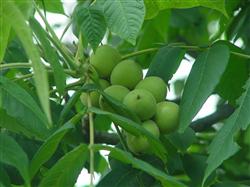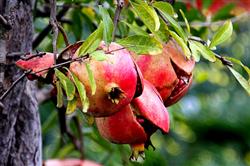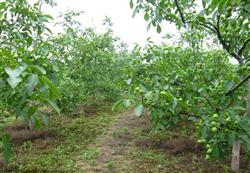How to manage walnut trees in summer?

How to manage walnut trees in summer? Please introduce the method of summer walnut shoot growth is the fastest, physiological activity is the strongest, is the highest survival rate of budding, the most critical period. Yellow diamondback moth, raised-limb moth (walnut black), walnut yellow gully elephant, cloud spot longicorn beetle, diamondback moth, walnut tumor moth and other pests began to Eclosion and lay eggs. Rot disease and technical blight occurred in large numbers. In this period, the task of budding should be completed in time, and the occurrence of diseases and insect pests should be monitored at any time. 1. After picking, the scion of bud grafting should immediately cut off the compound leaves, leave the petiole to about 0.5 cm, wrap it in a wet sack or wet cloth, and put it in a low temperature place. When budding, you can take a bucket, fill the bucket with 10 cm deep water, put the scion into the bucket, cover it with a wet cloth or wet towel, and take one after each. Before budding, cross-cut the scion buds up and down with a double-edged knife, and then cut one knife vertically on each side of the bud. Then cut off the head of the rootstock seedling, leave 6-8 compound leaves, cross-cut the 3rd-4th compound leaf and smooth part with a double-edged knife, then cut it vertically on one side, then buckle it with a knife edge or fingernail, then buckle the cut buds on the scion quickly, insert it into the rootstock incision, align on one side, press the grafting bud with one finger according to the bud width on the other, and tear off the rootstock cortex with the other hand. Align the sprout and the cut on the rootstock left and right (the top and bottom can generally be aligned because of the use of a double-edged bud splice), and then fasten it with a plastic strip. 2. Monitor the occurrence of diseases and insect pests in the areas where the occurrence of walnut limb moth (walnut black) is serious, and observe the process of raising limbs from pupae to adults, spawning, eggs and hatching into larvae, spraying 25% carbaryl 600 times every 10 days during Eclosion, spawning and hatching period, or 5000 times of enemy kill or 800-1000 times of 4% dimethoate EC. Artificial control can be carried out in the areas where the occurrence of the yellow diamondback moth (Spodoptera litura, Plutella xylostella) is serious, that is, in the early stage of egg hatching, it is found that the leaves have been eaten by insects, and the leaves are cut off with scissors (or high-tech scissors). Trample to death with the foot (because the larvae of the diamondback moth have the habit of feeding in groups), this method is simple and easy, and the effect is better. The second method is suitable for areas with small area or low population density. It can also spray 1500 times of 90% trichlorfon or 25% imidophos emulsion. Insecticides can be sprayed on Gypsy moth, walnut tumor moth and so on, and the effect is better. For the areas where longicorn beetles occur seriously, make a small hook with iron wire to make the exit of insect droppings and sawdust, insert it with a small hook or dip a cotton ball with insecticide, and seal it with mud behind. For areas with serious walnut gully elephants, in addition to prevention and control in winter, the soil of the rhizome can be dug up from June to July, the cortex can be cut with an axe every 10 cm, and the root neck can be re-sprayed with 5 times liquid of dichlorvos or 50% phosphoamine 50-100 times liquid, and then sealed with soil to poison larvae and pupae. For areas with serious diseases such as rot and ulcers, the prevention and control methods are the same as above, that is, cut off the disease with a sharp knife, and then apply Fumei arsenic and other fungicides. 3. Replenish water to ensure that the tree is strong. If the weather is dry, you can replenish water. According to the situation, furrow irrigation, sprinkler irrigation, hole irrigation or fertilizer and water storage can be carried out. Click to get more hickory planting techniques click to get more fruit planting techniques
- Prev

How to prevent pomegranate cracking?
How to prevent pomegranate cracking? Please introduce the method of pomegranate cracking, which is not only easily contaminated by diseases, insect pests and drugs, but also affects the commercial value of pomegranate. Prevention and control of pomegranate cracking can refer to the following three measures: ① timely watering and management of pomegranate should grasp the principle of "two irrigating and two irrigating". Two irrigates namely: winter or.
- Next

How to manage walnuts in July and August? What diseases and insect pests need to be controlled?
How to manage walnuts in July and August? What diseases and insect pests need to be controlled? Walnuts in July and August can be managed with reference to the following methods: first, water and fertilizer management water-hung trees have basically fixed fruit size in July and entered the shell hardening period. There is no need for artificial watering during this period. The soil is too hydrated.
Related
- Moge, come on! The staff of the peasant association in the producing area of cantaloupe were frightened when the crowd gathered.
- Causes and Solutions of low Fruit setting rate of Apple
- Symptoms and control measures of passion fruit virus disease
- Fruit growing lesson: how do apple orchards keep high yields?
- Can you build orchards in the mountains? What are the pros and cons?
- How to manage the coloring period of Crisson grape?
- This paper introduces the processing technology of two kinds of fig products.
- How much is a month for retired teachers in rural areas by 2020?
- How can strawberry planting increase sugar content? We should pay attention to management in many aspects.
- What are the cultivation techniques on how to improve the yield of golden fruit?

